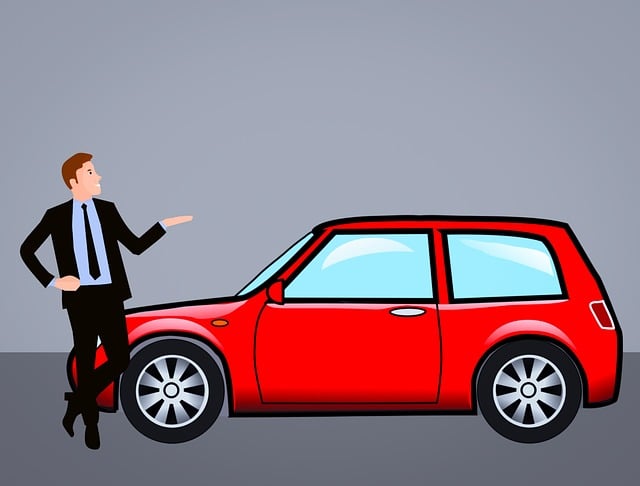“Looking to register your car in California? This comprehensive guide breaks down the process step-by-step, ensuring a smooth experience. From understanding crucial requirements and gathering essential documents to navigating the DMV visit, we’ve got you covered. Learn about the critical process of VIN (Vehicle Identification Number) verification, a key step often overlooked. By following these straightforward instructions, you’ll be on your way to securing your California car registration in no time.”
- Understand California Car Registration Requirements
- Gather Necessary Documents for Registration
- Schedule and Prepare for DMV Visit
- Perform VIN Verification: Steps and Process
- Complete Registration and Obtain License Plate
Understand California Car Registration Requirements

Before registering your car in California, it’s crucial to understand the state’s specific requirements for vehicle identification number (VIN) verification. The California Department of Motor Vehicles (DMV) mandates that all vehicles entering the state undergo a rigorous inspection process. This involves a thorough check of the VIN to ensure its authenticity and accuracy, which is often referred to as DMV vin verification. It’s essential to have accurate records and documentation for your vehicle’s history, including maintenance records and any prior ownership changes.
One innovative service that has gained popularity in California is the mobile vin verification process, offered by various mobile vin verifiers or inspectors. This convenient option allows you to get the necessary inspection done without having to visit a DMV office. Mobile vin inspectors can perform the required checks, including a visual examination and data cross-referencing with national databases, ensuring your car meets all registration standards. By utilizing these modern solutions, such as mobile vin verification, you streamline the registration process and save time.
Gather Necessary Documents for Registration

Before heading to the California Department of Motor Vehicles (DMV) to register your car, make sure you have all the essential documents in order. This process typically requires a variety of paperwork to ensure a smooth transaction and accurate record-keeping. Key among these is the Vehicle Identification Number (VIN) verification, which can be completed through a DMV-approved inspection or a mobile vin inspection service.
A mobile vin inspector can provide this crucial service by performing a VIN inspection right at your location, saving you time and effort. This step involves verifying the vehicle’s history and ensuring it meets all safety standards. Once these checks are done, along with gathering other required documents like proof of insurance, registration from the previous state (if applicable), and possibly a bill of sale or lease agreement, you’ll be well-prepared to complete your car registration at the DMV.
Schedule and Prepare for DMV Visit

Before heading to the DMV, take some time to prepare for your visit. Gather all the necessary documents, including your vehicle’s registration paperwork, proof of insurance, and identification. It’s crucial to ensure everything is in order to avoid any delays or complications during the registration process. Additionally, consider scheduling a DMV appointment online to manage your time efficiently and reduce wait times.
One important step in preparing for your trip involves arranging for a DMV VIN (Vehicle Identification Number) verification. This can be done through a mobile VIN inspection service that offers convenience by coming to your location. Alternatively, some mobile vin verifiers provide an at-home kit allowing you to perform the inspection yourself before visiting the DMV. Ensure this step is completed accurately as it’s a critical part of the registration process in California.
Perform VIN Verification: Steps and Process

Before registering your car in California, it’s crucial to perform a Vehicle Identification Number (VIN) verification. This process ensures that the vehicle matches the details on its registration and title records. The Department of Motor Vehicles (DMV) recommends completing this step as part of the registration process. You can either conduct a VIN inspection at a DMV office or opt for a mobile vin verification service, which is particularly convenient for busy individuals.
To begin the vin inspection, gather essential documents like your driver’s license, vehicle title, and proof of insurance. Next, locate the VIN on the vehicle—it’s usually found on the driver-side door frame or in the engine bay. Compare this number with the one provided by the DMV to ensure accuracy. If all information aligns, proceed with registration; otherwise, address any discrepancies. A mobile vin inspection service will send a professional to your location for this verification step, saving you time and effort.
Complete Registration and Obtain License Plate

Once you’ve gathered all necessary documents and passed the DMV test, it’s time to complete your car’s registration process and obtain its license plates. This involves a final step of verifying your vehicle’s unique identifier, known as the Vehicle Identification Number (VIN). For convenience, many California residents opt for a mobile vin inspection or vin inspection service that comes to them, streamlining the entire experience.
To finalize the registration, you’ll need to visit a DMV office with your completed application, proof of insurance, and passed smog test documents. The DMV agent will conduct a dmv vin verification check to ensure the VIN on your car matches the information in their records. Once verified, they will issue your license plates and register your vehicle, making it legal to drive on California roads.
Registering a car in California involves understanding key requirements, gathering essential documents, preparing for a visit to the DMV, performing a DVW vin verification, and completing registration. By diligently navigating these steps, you’ll ensure your vehicle complies with state regulations, enabling smooth road usage and legal driving. Remember, proper car registration is crucial for safety, liability, and maintaining California’s transportation infrastructure.
